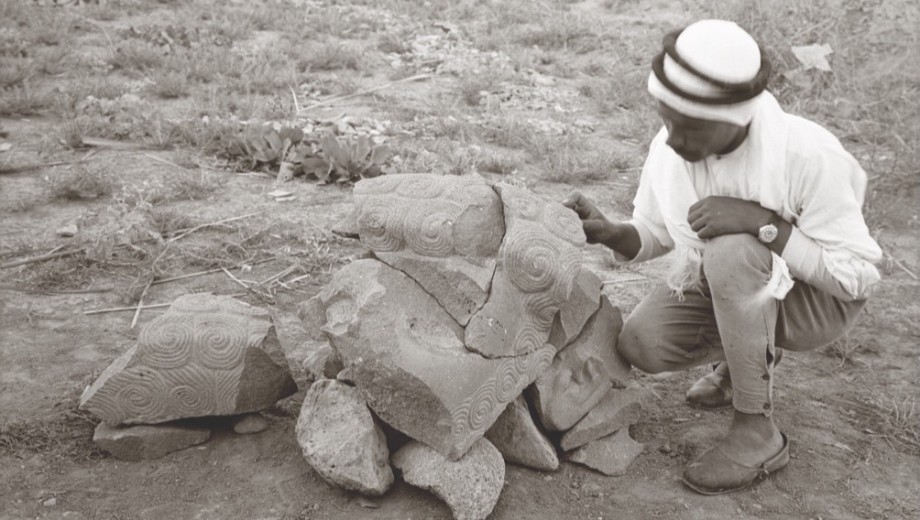In November the University unveiled a bronze bust of Georgiana Simpson, AB 1911, PhD 1921, in the Reynolds Club. Simpson, who studied German philology, was the first African American woman to earn a doctorate from the University of Chicago, and one of the first African American women to earn a doctorate in the United States.
Along with their insights about monuments more generally, Tableau asked English literature scholar and art historian W. J. T. Mitchell and archaeologist James Osborne for their thoughts on the Simpson monument.
Mitchell: There always is going to be a need for a traditional monument to people like Georgiana Simpson. Memories and memorials can often be part of the private experience and the private sphere as well as the public. And then there are places in between the public and private, which the Simpson bust strikes me as a perfect example of. It’s a reflection of a partial public, sometimes called a special interest. But I think a better name for it is a partial public: people who become conscious of each other, and they want to have a memorial and a monument to someone who means something to them as a group.
With that in mind, the fact that it took so long for a museum to the African American experience to arrive in Washington, DC, was really quite remarkable, considering how the history of this country is so deeply associated with it.
Osborne: I teach a Signature course for undergrads called BIG: Monumental Buildings and Sculptures in the Past and Present. One of the main points I try to get across to students is that one can use a society’s monuments as a way to understand its values. Monuments can help make productive sense of the world around us as well as the worlds of other cultures, past and present, and usually the conclusions we draw from monuments as historians and anthropologists are only partially related to the goals of the monument builder. A grand palace excavated from 3,000 years ago might indicate a king’s power—presumably his intention—but also his tendency to exploit citizens to suit his own ends.
In this case, the choice to celebrate Georgiana Simpson and her accomplishments with a statue of course bodes well for our recognition of the need to continue advocating for social justice and civil rights in this country and on campus. At the same time, however, the fact that Simpson needs to be celebrated at all is indicative of the racial injustices suffered by African Americans, and that major problems exist that are in need of corrective.
I have found that monuments’ relationships with the people around them are highly unstable, constantly shifting depending on circumstance. Often they generate a lot of excitement at first, and then might stand more or less ignored for decades or more—only to be mobilized again as society around them changes. This is exactly what we have been seeing with the Confederate statues, for example. In many cases they were merely static parts of the urban landscape that have been suddenly made an active component of conversations from local passersby to politicians in Washington. The disconnect that arises from monuments’ unchanging physical form with society’s highly dynamic values and beliefs over time is often what makes these objects such rich social texts for analysis.


Add new comment